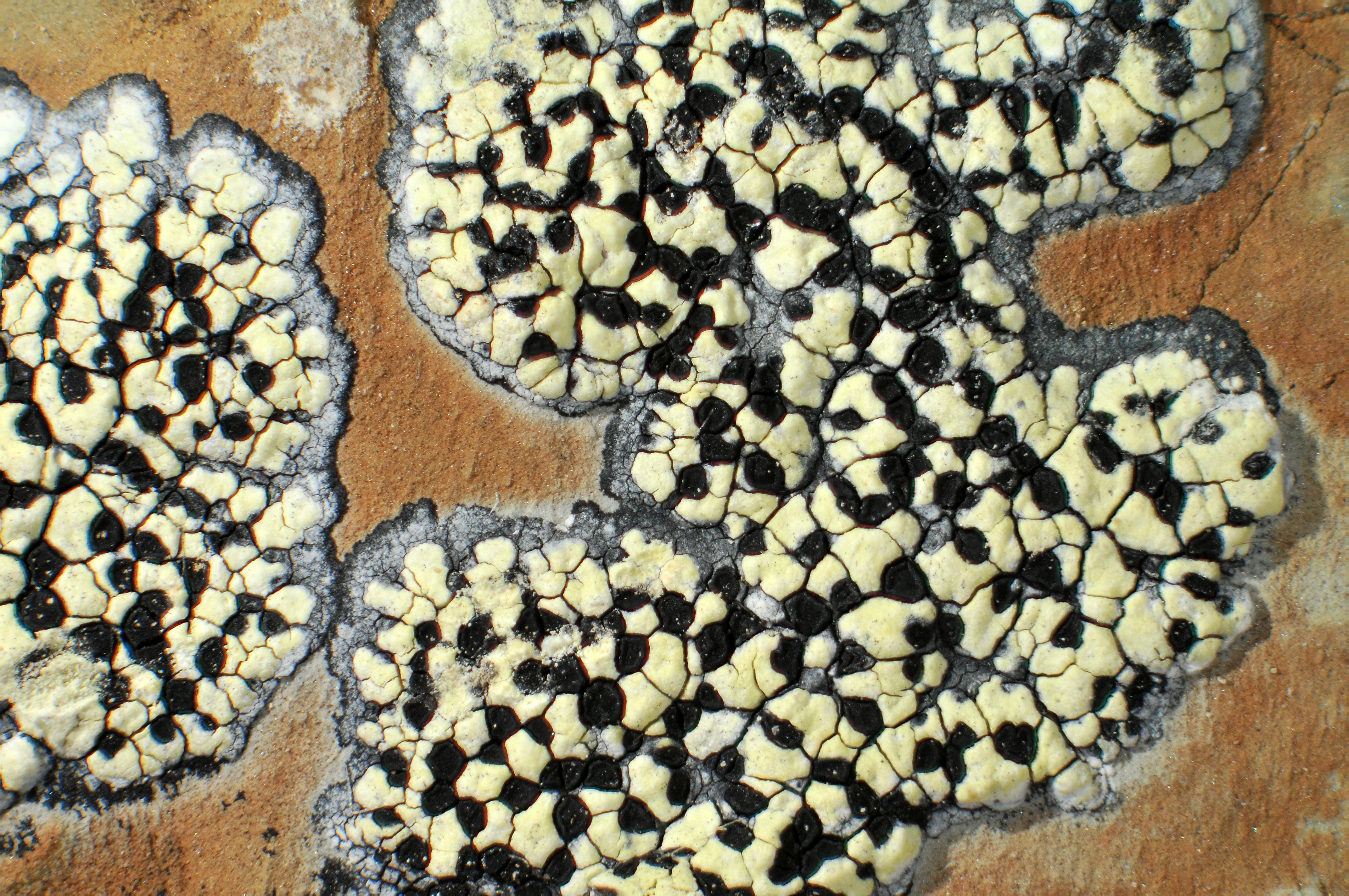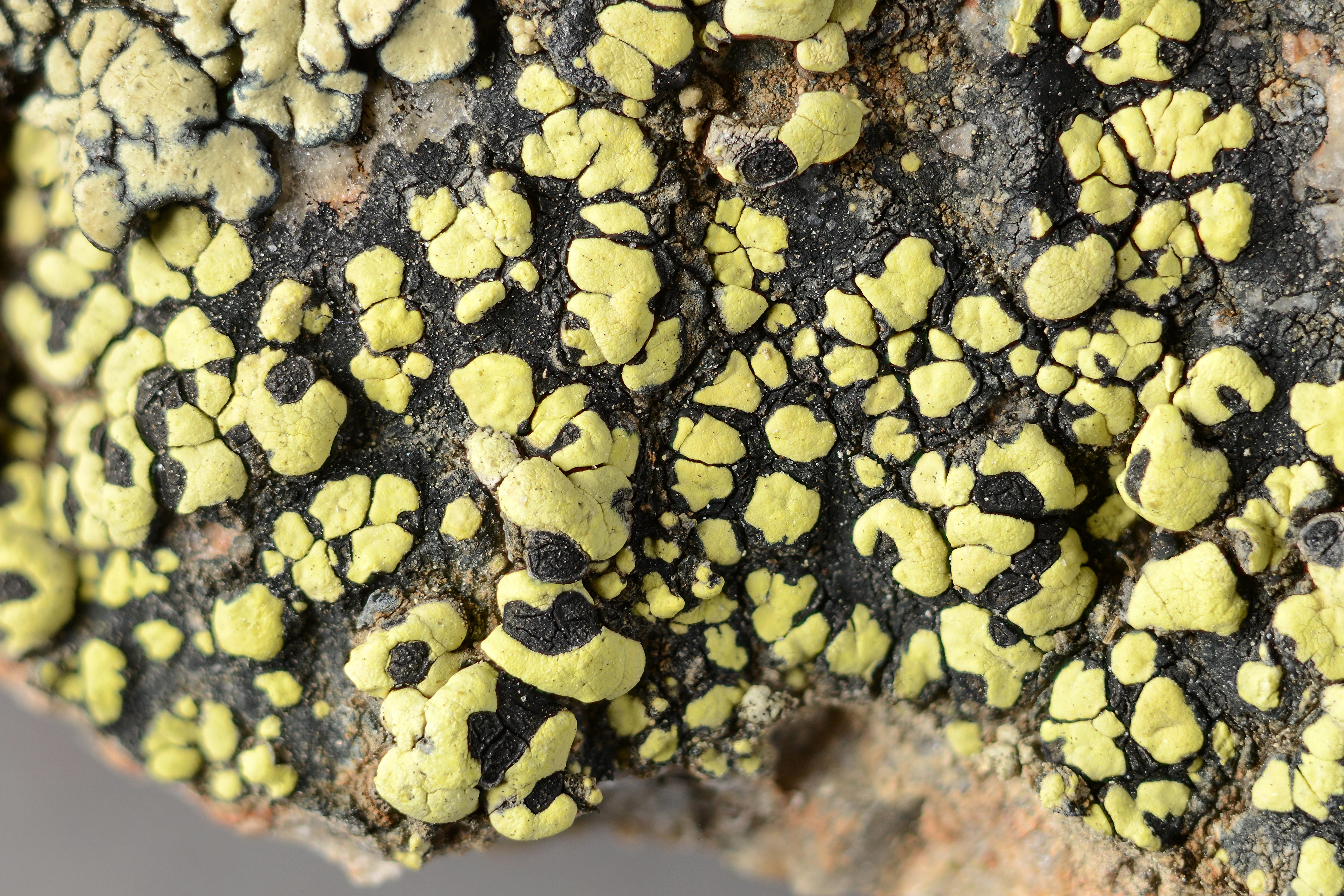Rhizocarpon geographicum
- Innhold
- Morphology
- Chemistry
- Habitat
- Comment
- Look-alikes
Morphology
Thallus areolate, up to 15 cm diam.; hypothallus usually well developed, black; areolae up to 2.5 mm diam., bright yellow or more rarely greenish or greyish yellow, dull or shiny, contiguous to scattered, more or less angular, plane to convex or rarely slightly concave, usually smooth; medulla KI+ dark violet. – Apothecia up to 1.5 mm diam., black, epruinose, orbicular or angular, plane to slightly convex, with a thick to indistinct margin; excipulum dark brown in the rim, inner part paler brown, usually K+ red; hypothecium dark brown, K–; hymenium colourless to faintly green or faintly brown; epihymenium pale green to pale brown, K– to K+ faintly red; no crystals or granules in the apothecia; ascospores 8 per ascus, eumuriform, dark greenish brown, 20–40 × 10–22 µm. – Conidiomata not seen.
Chemistry
Rhizocarpic and either psoromic or barbatic acid, sometimes also gyrophoric acid; spot tests: medulla PD– or PD+ yellow, K–, C– or C+ red.
Habitat
Saxicolous, mainly on siliceous rock. Common both in the lowlands and mountains.
Comment
The species is very variable, and seven subspecies [ssp. arcticum (Runemark) Hertel, ssp. diabasicum (Rsänen) Poelt & Vezda, ssp. frigidum (Rsänen) Hertel, ssp. geographicum, ssp. kittilense (Räsänen), ssp. lindsayanum (Räsnen), and ssp. prospectans (Räsnen) D. Hawksw. & Sowter] are presently recognized in Norway. This taxonomy is badly in need of revision. The other yellow Rhizocarpon species with amyloid medulla, eumuriform ascospores and not crescent-shaped areolae are R. macrosporum and R. saanaense; both have larger ascospores than R. geographicum. Rhizocarpon atroflavescens and R. ridescens both have smaller, submuriform ascospores; the latter is even sorediate.




